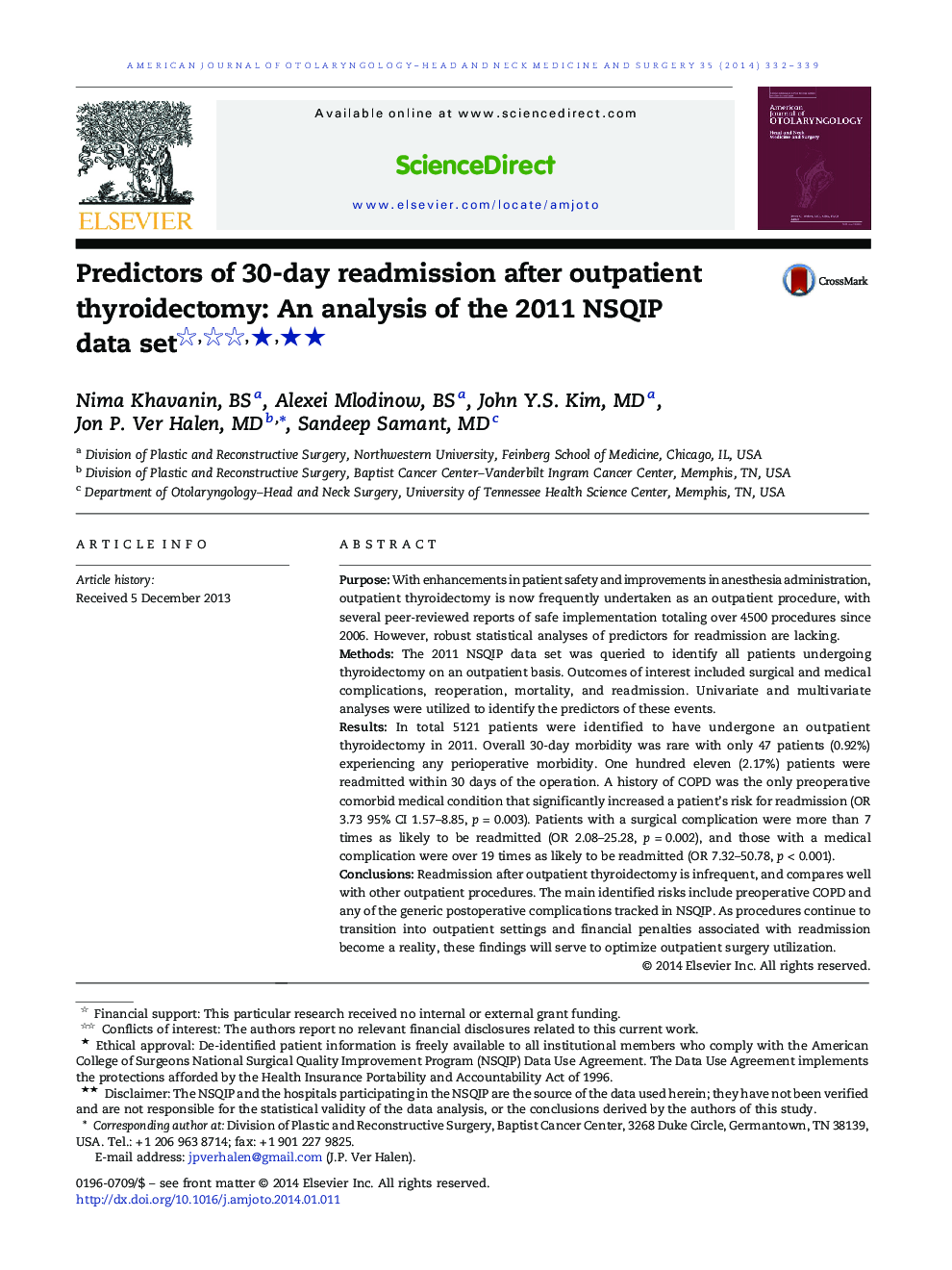| Article ID | Journal | Published Year | Pages | File Type |
|---|---|---|---|---|
| 4103238 | American Journal of Otolaryngology | 2014 | 8 Pages |
PurposeWith enhancements in patient safety and improvements in anesthesia administration, outpatient thyroidectomy is now frequently undertaken as an outpatient procedure, with several peer-reviewed reports of safe implementation totaling over 4500 procedures since 2006. However, robust statistical analyses of predictors for readmission are lacking.MethodsThe 2011 NSQIP data set was queried to identify all patients undergoing thyroidectomy on an outpatient basis. Outcomes of interest included surgical and medical complications, reoperation, mortality, and readmission. Univariate and multivariate analyses were utilized to identify the predictors of these events.ResultsIn total 5121 patients were identified to have undergone an outpatient thyroidectomy in 2011. Overall 30-day morbidity was rare with only 47 patients (0.92%) experiencing any perioperative morbidity. One hundred eleven (2.17%) patients were readmitted within 30 days of the operation. A history of COPD was the only preoperative comorbid medical condition that significantly increased a patient's risk for readmission (OR 3.73 95% CI 1.57–8.85, p = 0.003). Patients with a surgical complication were more than 7 times as likely to be readmitted (OR 2.08–25.28, p = 0.002), and those with a medical complication were over 19 times as likely to be readmitted (OR 7.32–50.78, p < 0.001).ConclusionsReadmission after outpatient thyroidectomy is infrequent, and compares well with other outpatient procedures. The main identified risks include preoperative COPD and any of the generic postoperative complications tracked in NSQIP. As procedures continue to transition into outpatient settings and financial penalties associated with readmission become a reality, these findings will serve to optimize outpatient surgery utilization.
